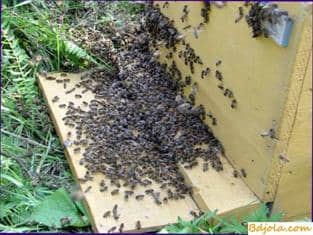
In the spring, when looking at bee colonies, it is possible to find moldy and worn honeycomb frames. As a rule, they are rejected, but the apiary is not always provided with honeycombs. Therefore, I try to use them after appropriate processing. I do so. I slowly immerse the frame in the bath so that the cells fill with water, and leave it for a day. During this time, the mud is soaked on the outside. Then they are removed and cleaned with a hair brush, periodically lowering into the water, after which I wash the frame.
Water from the cells is removed by shaking or with the help of honey extractor. Then carefully dry the honeycomb in a warm room or in the sun.
Морковный мед. Подкормка пчел сытой.
Beer lover's section